Vanilla Buttermilk Cake Recipe
This Vanilla Buttermilk Cake Recipe is so moist, fluffy, and has wonderful flavor.
We've made many buttermilk cake recipes over the years that we just love. This vanilla cake recipe is one of our favorites!
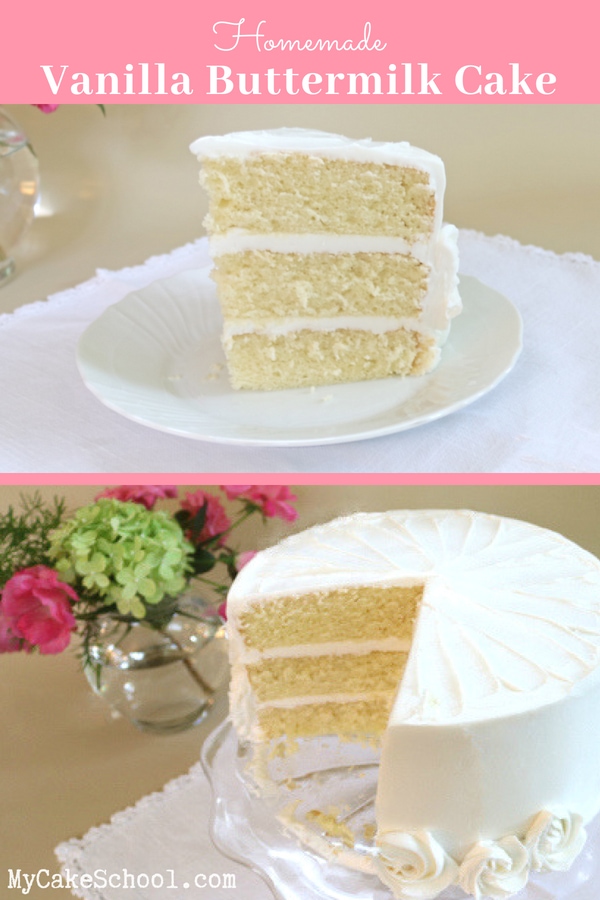
Our popular Almond Cake and Lemon Buttermilk Cake recipes were inspired by this flavorful recipe. It works perfectly for vanilla cupcakes also. You will love this wonderful go-to vanilla cake!
Keep this versatile vanilla cake recipe in mind the next time you need a great baby shower cake, birthday cake, bridal shower cake, baby shower cake, or a delicious dessert for no occasion at all!
Table of Contents
Ingredients for Vanilla Buttermilk Cake
Here's a quick look at the ingredients for our Vanilla Buttermilk Cake Layers. Make sure to see the recipe card at the bottom of this post for the complete recipe!
There are so many frostings that would be perfect with this vanilla cake, including the Classic Vanilla Buttercream Frosting used in our featured photo, as well as Chocolate Buttercream, Cream Cheese Frosting, and more!
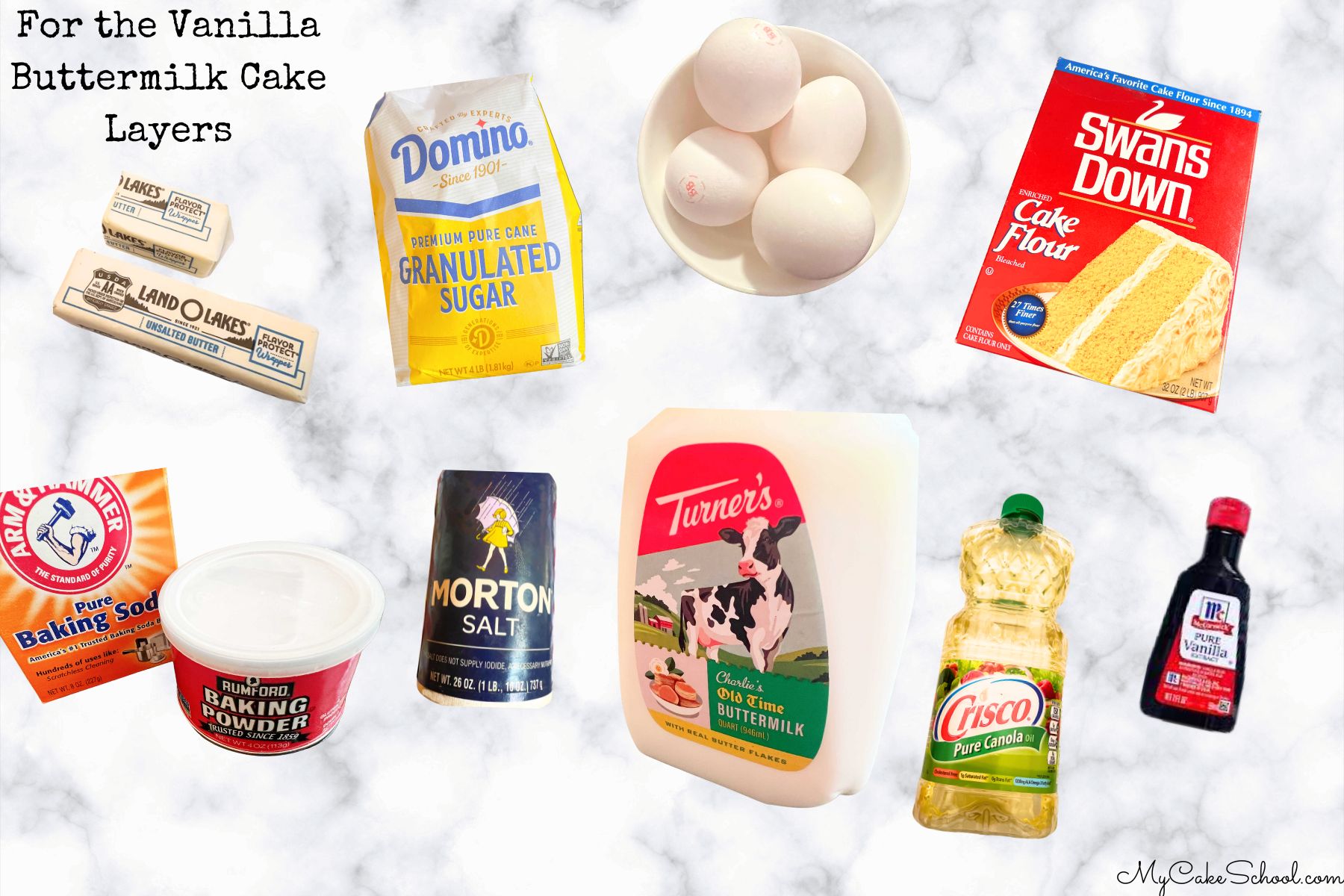
A Few Ingredient Tips
Cake Flour: We often use cake flour as its lower protein content makes for a softer, more tender cake.
Buttermilk: We recommend whole buttermilk rather than reduced fat, for added richness. Buttermilk's boost of acidity softens the strands of gluten in the cake batter, which enhances the texture of the cake.
Unsalted Butter: We use unsalted butter so that we have more control over the amount of salt in the recipe. However, if you are using salted butter, you can eliminate the additional salt that the recipe calls for.
How to Make a Vanilla Buttermilk Cake
Make sure to find the full recipe for Vanilla Buttermilk Cake at the bottom of this post. Here is a quick rundown of our steps!
- First, preheat the oven to 350 degrees F and grease and flour three 8 inch round cake pans. We also like to line the bottoms with parchment paper circles to ensure that nothing sticks.
- Start off by whisking together these dry ingredients: cake flour, baking soda, baking powder and salt for 30 seconds so that everything is well combined.
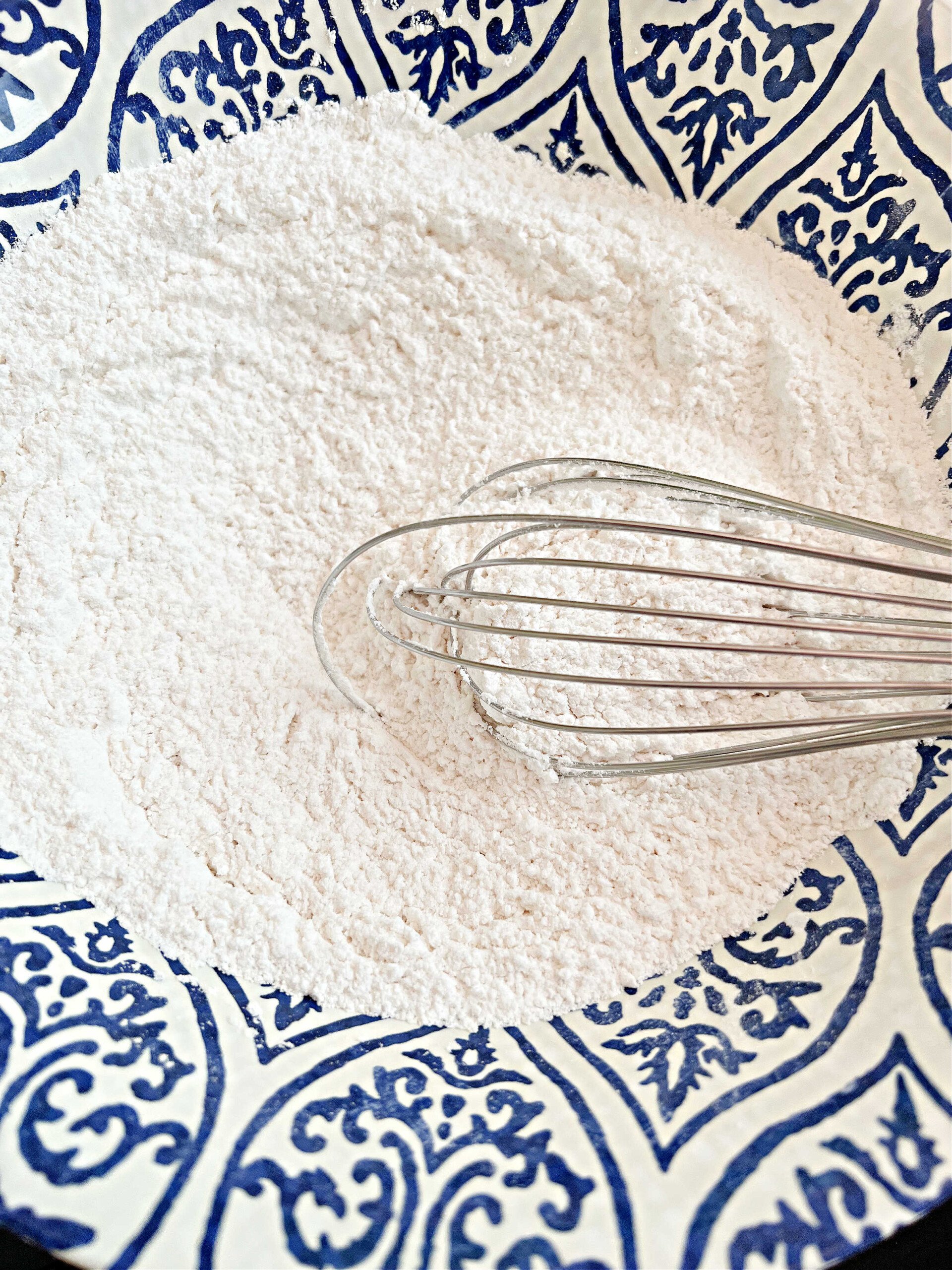
- In another bowl, add the buttermilk, vegetable oil, and vanilla extract.
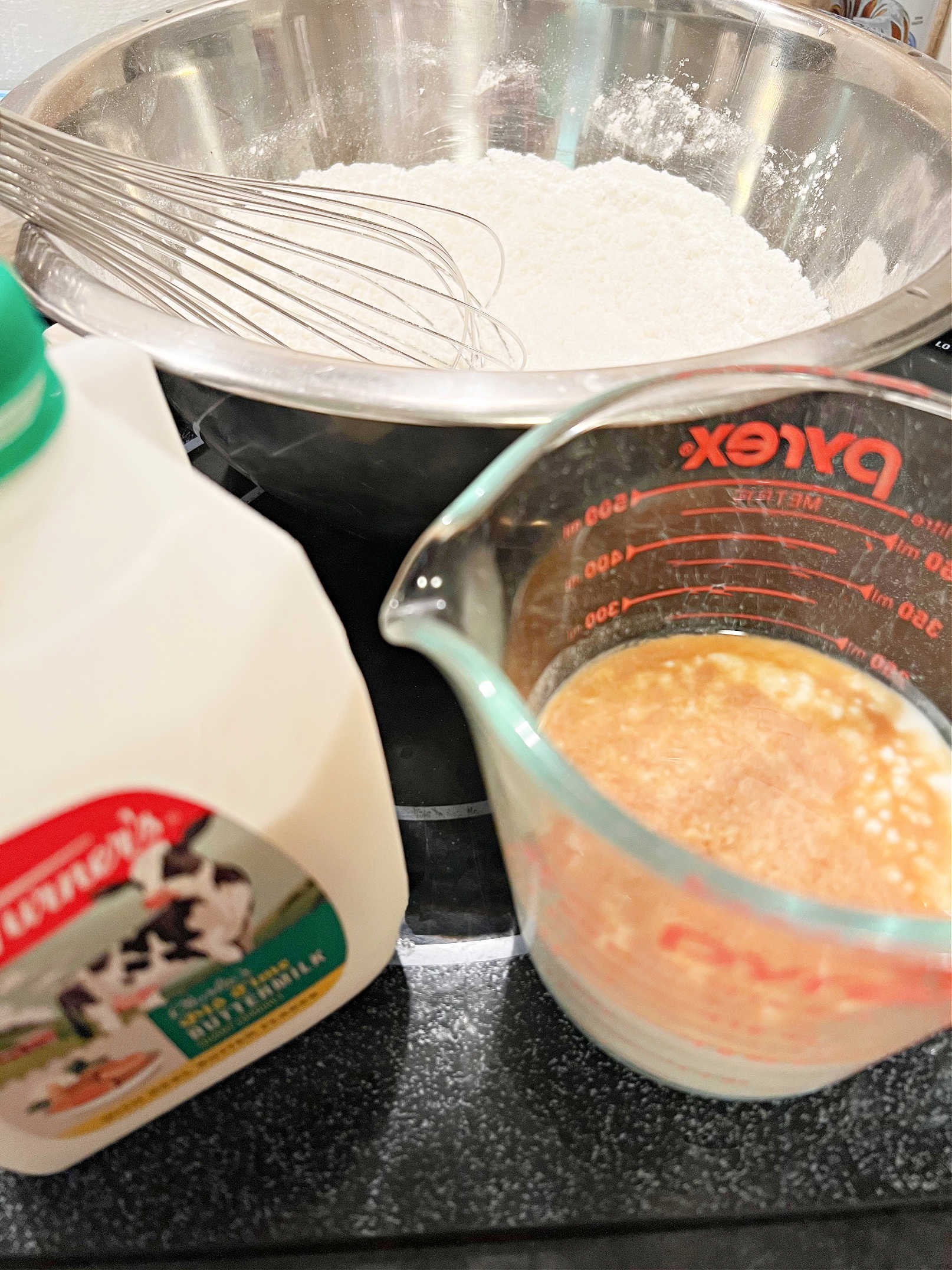
- Next, mix the softened butter until nice and smooth, then mix the sugar for 3-5 minutes until it lightens and becomes fluffy.
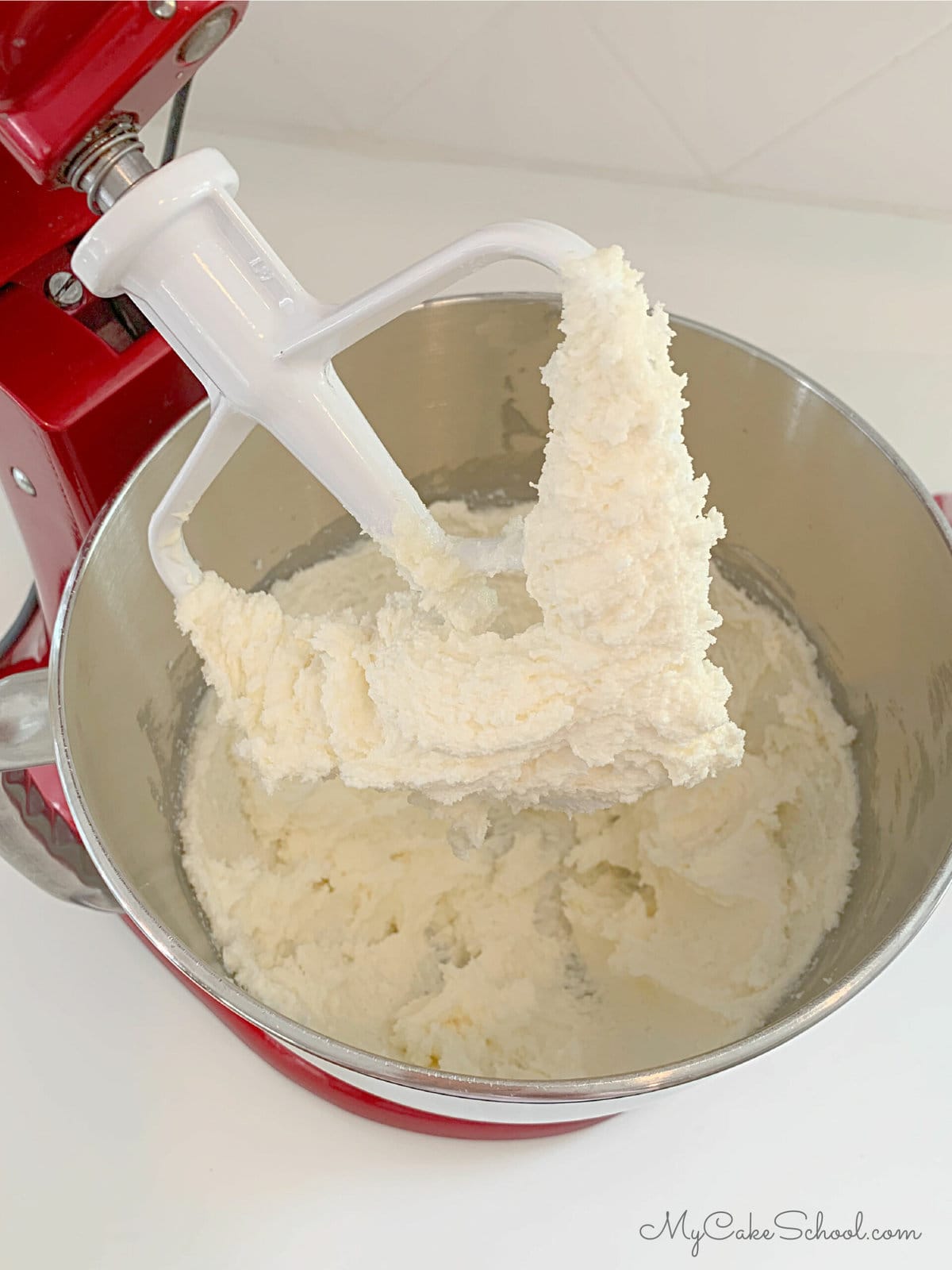
- Next, add the room temperature eggs one at a time.
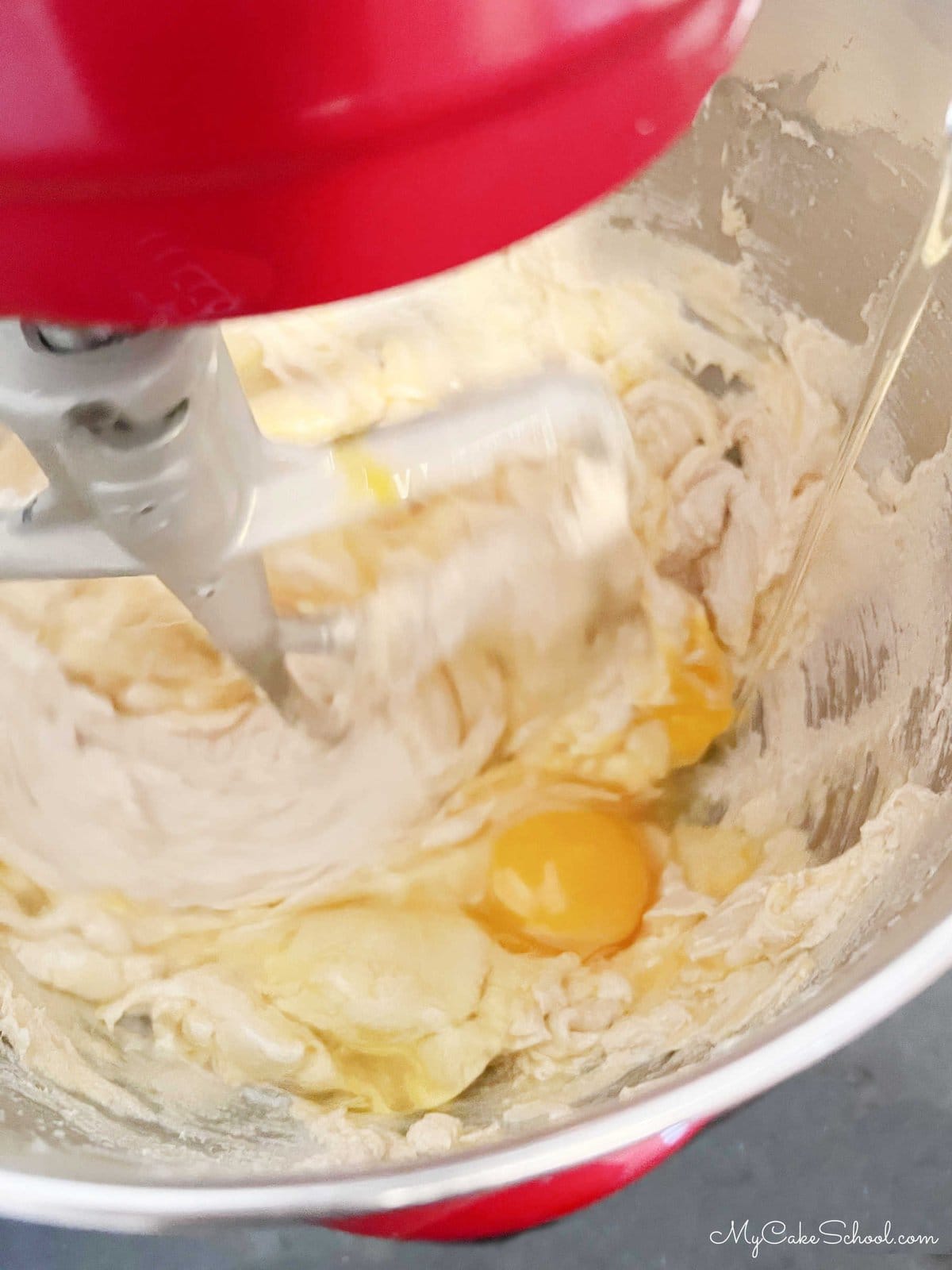
- Almost done! With the mixer on low speed, alternately add the flour mixture and buttermilk mixture, beginning and ending with the dry ingredients. After the last addition, mix just until the batter is combined.
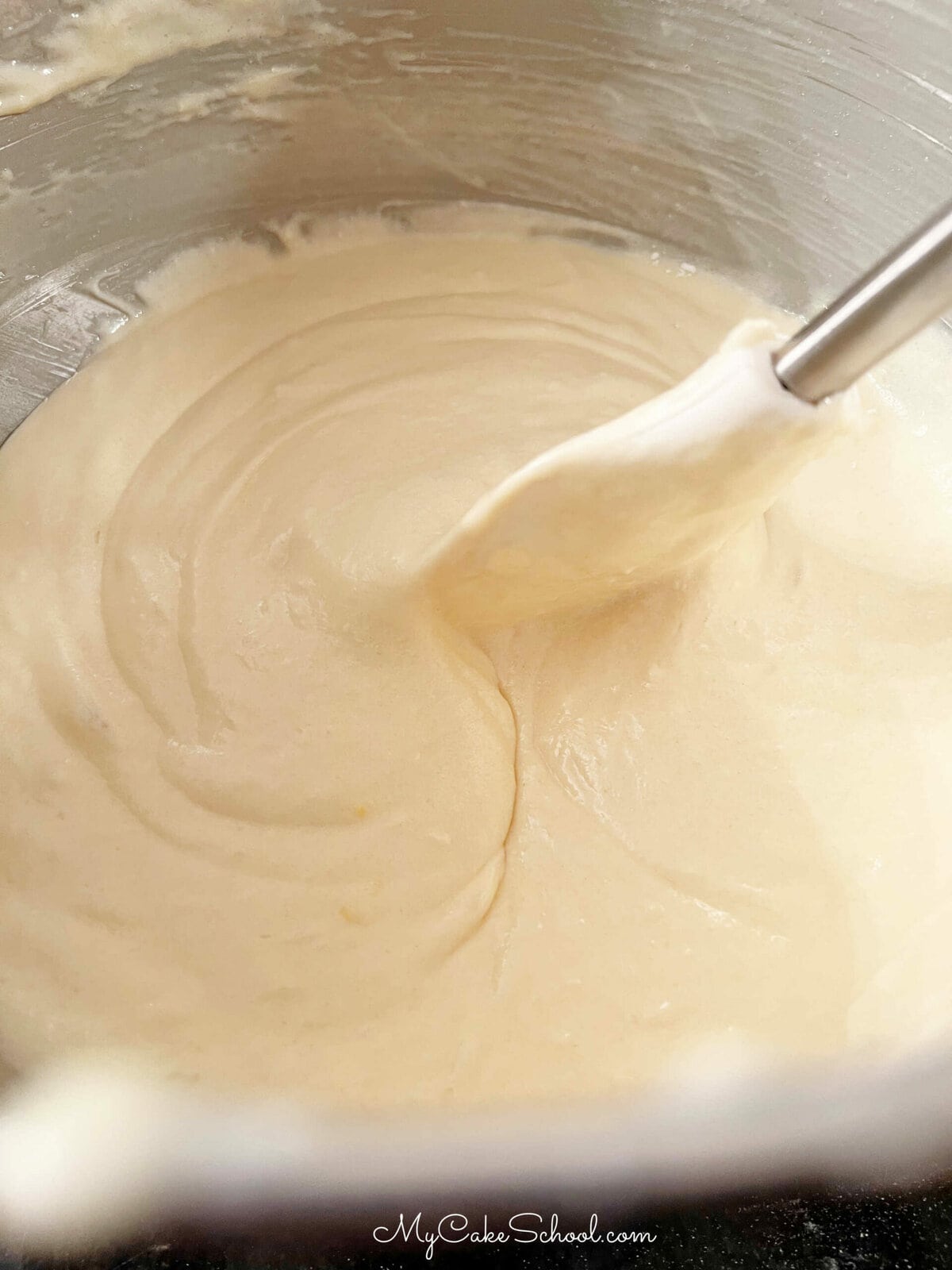
- Once ready, divide the vanilla buttermilk cake batter between three prepared 8 inch cake pans. Bake for about 25-30 minutes.
- Then, cool the cake layers, still in the cake pans, on a wire rack for 10 minutes before turning out.
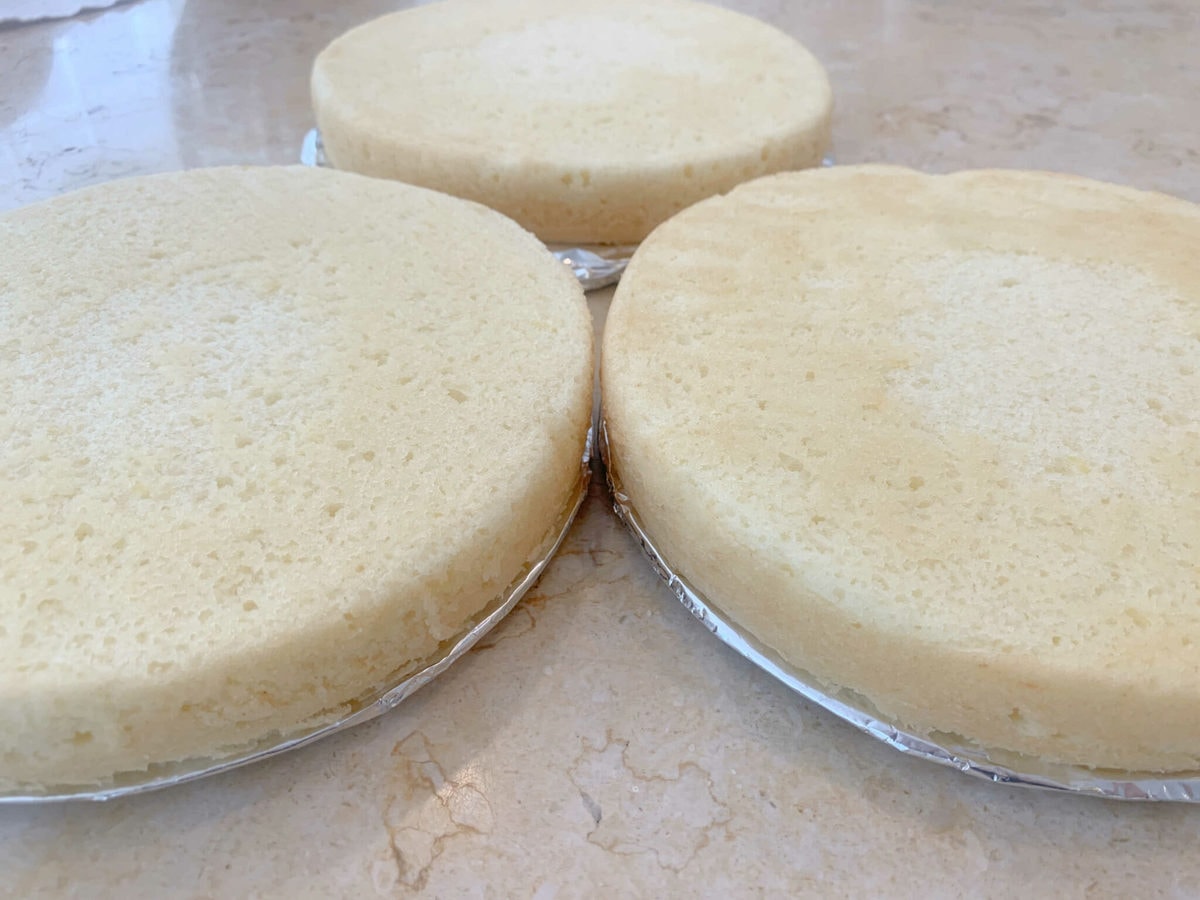
- Make sure that the layers have cooled completely before filling and frosting with your preferred frosting recipe! We used our Classic Vanilla Buttercream.
Recipe FAQs
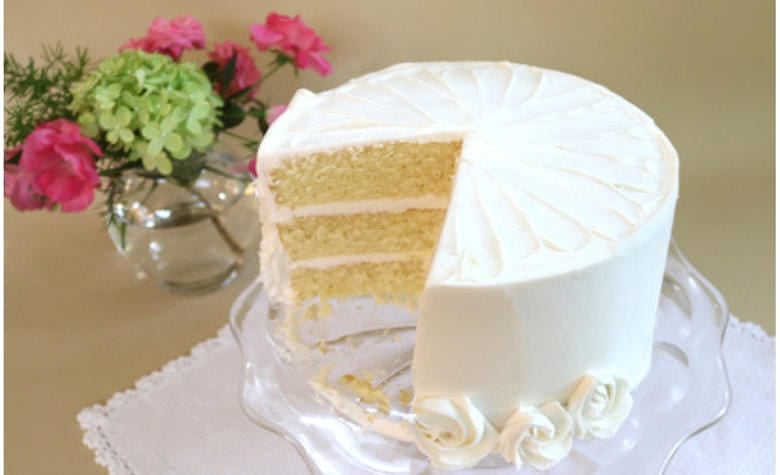
More Vanilla Cake Recipes
In addition to our gluten free version of this recipe (Gluten Free Vanilla Cake), and popular Vanilla Velvet Cake, we have more delicious vanilla & white cake recipes to share with you! Don't miss our section of Vanilla Cake Recipes. Here are just a few favorites:
Enjoy the Recipe
Thanks so much for stopping by! We hope that you enjoy this delicious vanilla cake recipe. Keep it in mind for your next special occasion. It would make a perfect birthday cake recipe, baby shower cake, and more!
In addition to our cake recipes, don't miss our huge collection of videos on cake decorating! If you prefer a more rustic (and super easy) design, check out our post on naked cakes!
Have you made this? We would LOVE for you to leave a ⭐️ rating as well as a comment and photo below! We really appreciate your feedback!
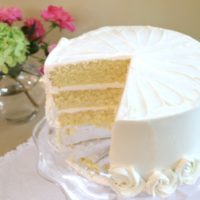
Vanilla Buttermilk Cake Recipe
Ingredients
Vanilla Buttermilk Cake Recipe
- 1 ½ sticks (170g) unsalted butter, softened. (Holds it shape but dents when pressed)
- 2 cups (400g) sugar
- 4 large eggs, room temperature (If in a hurry, place eggs in a bowl of warm water for 5 minutes.)
- 3 cups (342g) cake flour (If not using a digital scale, lightly spoon flour into measuring cup and level off.) See notes for substitution.
- 2 teaspoons (8g) baking powder
- ½ teaspoon (3g) baking soda
- ½ teaspoon (3g) salt
- 1 ¼ cups (296g) buttermilk (If you do not have buttermilk, see substitution below)
- ¼ cup (54g) vegetable oil (We use canola oil.)
- 1 Tablespoon (12g) vanilla extract
Instructions
- Preheat the oven to 350 degrees, grease and flour three 8×2 inch round pans.
- In a medium bowl, whisk the flour, baking powder, baking soda and salt for 30 seconds. Set aside
- In another bowl, add the buttermilk, oil and vanilla. Set aside..
- In the bowl of your mixer, add the butter and mix at medium speed until smooth. Gradually add the sugar and continue to mix on medium speed for 3 to 5 minutes until lightened in color and fluffy. Add the eggs one at a time mixing until the yellow of the yolk disappears.
- With the mixer on low speed, alternately add the flour mixture and buttermilk mixture, beginning and ending with the dry ingredients (3 additions of dry ingredients and 2 of liquid). After the last addition, mix just until combined. Be careful not to over-mix.
- Bake at 350 degrees for 25-30 minutes or until a toothpick inserted in the center comes out clean or with just few crumbs attached. Let cool 10 minutes and turn out.

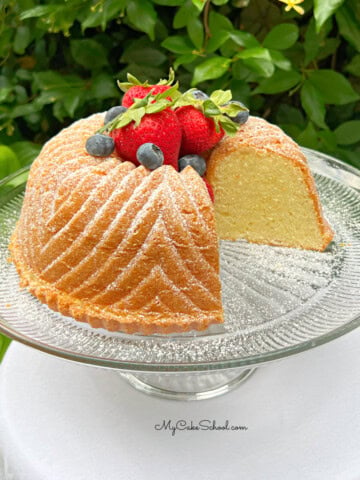
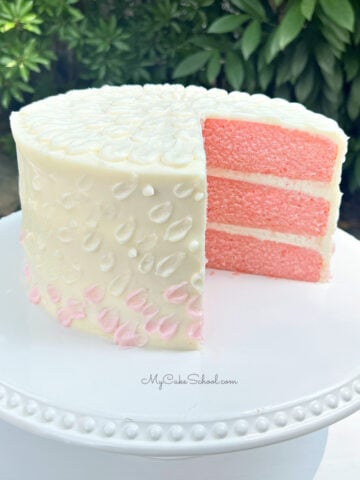
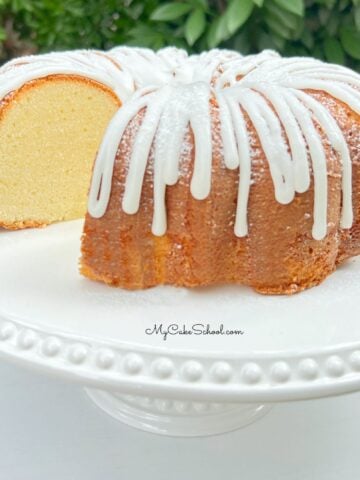
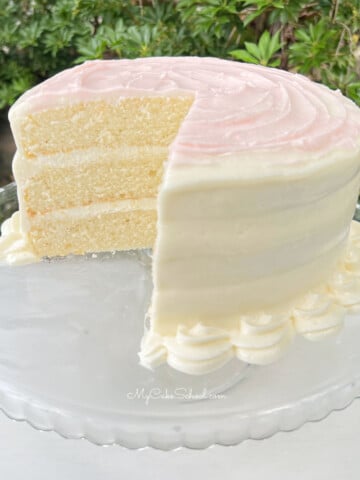
Hi Amanda, Thank you for posting, I'm glad all went well. I love rainbow cakes!
I know this may seem like a stupid question, but i am curious about "do not overmix the batter". I know it mostly means once the dry ingredients are incorporated, however, sometimes I see lumps in the batter when using this conventional method instead of the reverse creaming method. So, can you explain, when do you know exactly when to stop mixing? Do you have to worry about any lumps in the batter, or do you stop mixing as soon as the dry ingredients are just incorporated? I love your cakes made with reverse creaming, however, I would like to try this one. Thank you
Hi Stephanie, Over mixing can cause your cake to become dense and chewy. At the completion of mixing your batter there should not be any lumps. When adding dry ingredients, mix just until you do not see any of the flour. It is the same with the liquid ingredients, mix until it is incorporated into the batter. When all the ingredients are mixed in and you are finished, remove the mixing bowl from the beater and give the batter a final turn with a spatula just to make sure everything in the bottom of the bowl is mixed in.
Hi Melissa! Can I make this recipe using the reverse creaming method instead? I am looking for the tighter crumb.
Hi Daphne, Yes, it will be fine to do so. Recipes that use butter and have a sugar weight that is equal to or greater than the weight of the flour can successfully be mixed using the reverse creaming method. This recipe has a sugar weight of 400g and flour weight of 342g.
So happy to see this cake. I am doing a wedding cake in August and this may be “it”. Lots of time to make this for family and take a vote. I want a cake that will taste wonderful after being worked on for 2 days.That little bit of oil might do the trick! I will report back as soon as I make it. Thankyou!
How could I make this into a lemon buttermilk cake with lemon juice in the cake batter?
Hi Melissa, I have tried this buttermilk vanilla cake recipe..it's awesome.. I have a doubt..can it be used for tier cakes..can it hold the weight...
Regards Ann
Hi Ann, I 'm happy you enjoyed the recipe. Yes, this recipe will be fine to use for a tiered cake. If stacked correctly with dowel rods or bubble T straws almost any cake can be used for a tiered cake.
Hi Lei, I think you would like our lemon cake, you can replace the milk with buttermilk if you like. Link below to the recipe
https://www.mycakeschool.com/recipes-tutorials/lemon-scratch-recipe/
Do you happen to know how many cups of batter this recipe yields?
Hi Charletta, I think this makes 7 cups of batter. Hope you will enjoy the recipe.